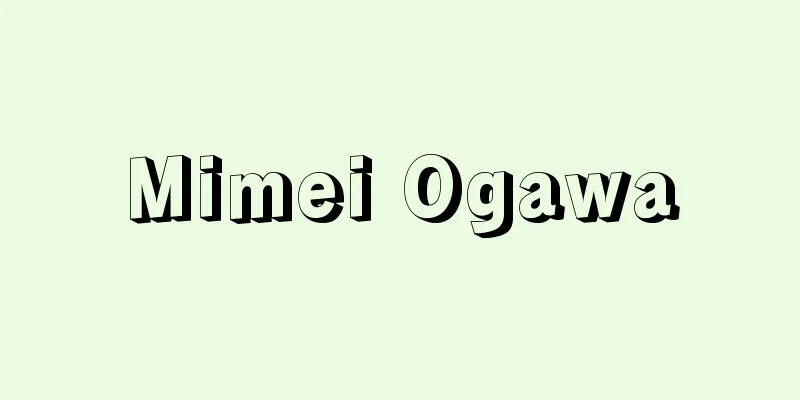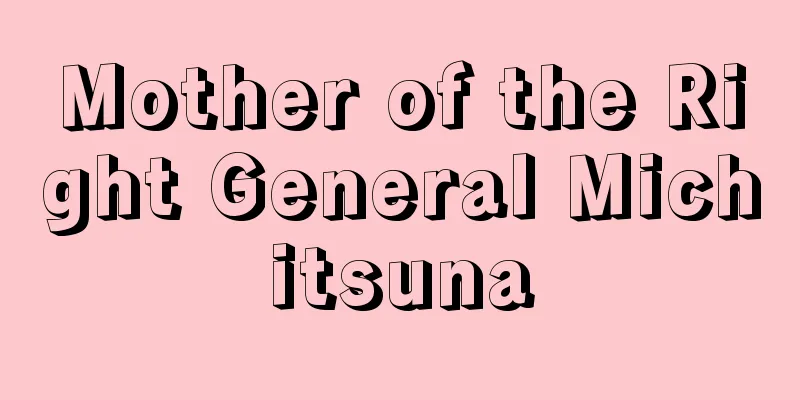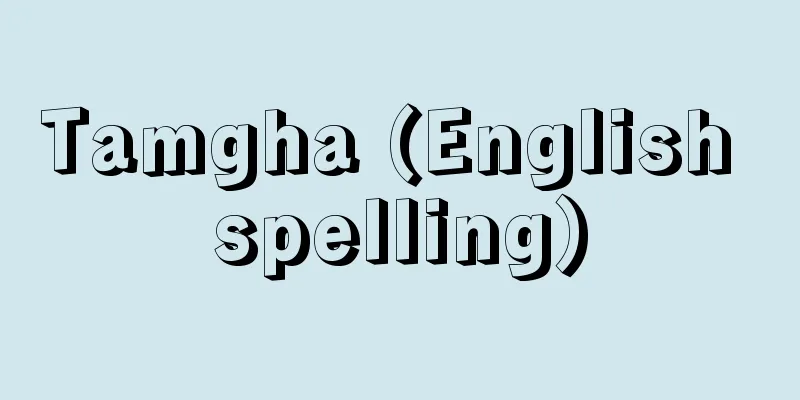Mimei Ogawa

|
Novelist and children's story writer. His real name is Kensaku. His pen name, Mimei, was given to him by his teacher, Tsubouchi Shoyo. It is correctly pronounced "Bimei," but is commonly pronounced "Mimei" today. He was born on April 7, 1882, in Takada, Niigata Prefecture, as the only son of a former samurai family. Due to poor results in mathematics, he failed Takada Middle School three times, and studied English at Waseda University, which had been founded shortly before and had a liberal atmosphere. The romantic tendencies of the novel "Kouunkyo" that he wrote while he was a student were recognized by Tsubouchi Shoyo, and his subsequent work "Hail and Sleet" earned him recognition as a promising newcomer in neo-romanticism literature at the end of the Meiji period. He was naturally good at writing short stories, and published over a dozen short story collections, including his first collection, Shuujin (1907), and only one full-length novel, Rodon na Neko (1912). In the Taisho period, he became more socialist, and while leading the labor literature magazine Kuroen, he also participated in the founding of the Japan Socialist League. During this period, he was also influenced by the founding of Akai Tori (Red Bird), which was supported by the Taisho democratic ideology, and began to write fairy tales again, something he had stopped doing for a while after his first collection of fairy tales, Akai Fune (Red Boat) (1910). He published several collections of fairy tales, including Akai Rosoku (Red Candle) and Ningyo (The Mermaid) (1921), and made a great contribution to the rise of modern children's literature. At the end of the Taisho period, the incompatibility between his innate romantic tendencies and socialist literary theory became evident, and with the publication of the six-volume collection "Miyō Senshū" (1925), he decided to devote himself to writing fairy tales, and thereafter lived his life as a children's writer. He passed away on May 11, 1961. In the pre-war years leading up to Japan's defeat in World War II, he was the greatest figure in Japanese children's literature, both in terms of the literary world and in terms of literary substance. About ten years after the war, when a new children's literature movement was emerging, the symbolic methods used in his stories were criticized and rejected, but in recent years his value has come to be recognized in the context of literary history. [Shoichiro Kami] "The Complete Works of Ogawa Mimei's Novels," 6 volumes (1979, Kodansha)" ▽ "The Complete Works of Ogawa Mimei's Fairy Tales," 16 volumes (1976-78, Kodansha)" ▽ "The Essence of Mimei's Fairy Tales," by Kami Shoichiro (1966, Keiso Shobo)" ▽ "My Father, Ogawa Mimei," by Okanoue Suzue (1970, Shinhyoron)" ▽ "A Study of Mimei's Fairy Tales," by Tsuzukihashi Tatsuo (1977, Meiji Shoin) [Reference] |Source: Shogakukan Encyclopedia Nipponica About Encyclopedia Nipponica Information | Legend |
|
小説家、童話作家。本名は健作。雅号の未明は師の坪内逍遙(つぼうちしょうよう)がつけてくれたもので、正しくは「びめい」と読むが、今日一般には「みめい」と読まれている。明治15年4月7日、新潟県高田に旧士族のひとり息子として生まれる。数学の成績が悪いため高田中学校を3回落第、創立まもなくの自由な雰囲気のあった早稲田(わせだ)大学英文科に学んだ。在学中に書いた小説『紅雲郷』のロマンチックな傾向を坪内逍遙に認められ、続いて書いた『霰(あられ)に霙(みぞれ)』で明治末期の新ロマンチシズム文学の有望な新人と認められた。生来的に短編小説に優れており、処女短編集『愁人(しゅうじん)』(1907)をはじめ十数冊の短編小説集を世に送り、長編小説は『魯鈍(ろどん)な猫』(1912)1作しかない。大正期に入ってからは社会主義的な傾向を強め、労働文学の雑誌『黒煙』を指導するかたわら日本社会主義同盟の創立にも参加した。またこの時期には、大正デモクラシー思潮に支えられた『赤い鳥』の創刊なども影響して、処女童話集『赤い船』(1910)以後しばらく筆を絶っていた童話も盛んに書くようになり、『赤い蝋燭(ろうそく)と人魚』(1921)をはじめ幾冊もの童話集を刊行、近代的な児童文学の興隆に大きく寄与した。大正末期に至ると、生得のロマンチックな性向と社会主義的な文学理論との違和が決定的となり、『未明選集』全6巻(1925)の刊行を機に童話作家として専念することを決意、以後は児童文学者として生き抜いた。昭和36年5月11日没。 第二次世界大戦の敗戦までの未明は文壇的にも文学実質的にも日本児童文学最大の存在であった。戦後10年ほどたって新たな児童文学運動がおこる時点で、彼の童話の象徴的方法は批判され否定されたが、近年は文学史的にその価値が評価されるようになってきている。 [上笙一郎] 『『小川未明小説全集』全6巻(1979・講談社)』▽『『小川未明童話全集』全16巻(1976~78・講談社)』▽『上笙一郎著『未明童話の本質』(1966・勁草書房)』▽『岡上鈴江著『父・小川未明』(1970・新評論)』▽『続橋達雄著『未明童話の研究』(1977・明治書院)』 [参照項目] |出典 小学館 日本大百科全書(ニッポニカ)日本大百科全書(ニッポニカ)について 情報 | 凡例 |
Recommend
TRISTAN
Transposable Ring Intersecting Storage Accelerator...
barber pole
…In England, the barber-surgeon guild was recogni...
IUGG - IuG
Please see the International Union of Geodesy and...
Berlepsch, HFvon (English spelling) BerlepschHFvon
...However, many of the birds that enter the nest...
Kamogata Domain
During the Edo period, this was a branch of the O...
Peoria - Peoria (English spelling)
A city in central Illinois, USA, facing the Illin...
Ogata Sohaku
...A painter from the mid-Edo period. His given n...
Kimikagesou - Kimikagesou
→ Lily of the valley Source : Heibonsha Encycloped...
Labor law - Labor law (English)
It refers to the totality of legal norms concerni...
Jim Crowism
…Jim Crow as a law was abolished with the passage...
Hobetsu [town] - Hobetsu
A former town in Yufutsu District, Hokkaido. It oc...
Belém (Portugal) (English spelling)
…The country's architecture showed great indi...
Le Nôtre, A. (English spelling) LeNotreA
…French landscape gardener during the reign of Lo...
"Essai sur le don" (English spelling)
...His early studies on sacrifice, classification...
Argun' (English spelling)
A large tributary of the Amur River in eastern Rus...








![Adygea [Autonomous Region] - Adyge](/upload/images/67cf304b603af.webp)
